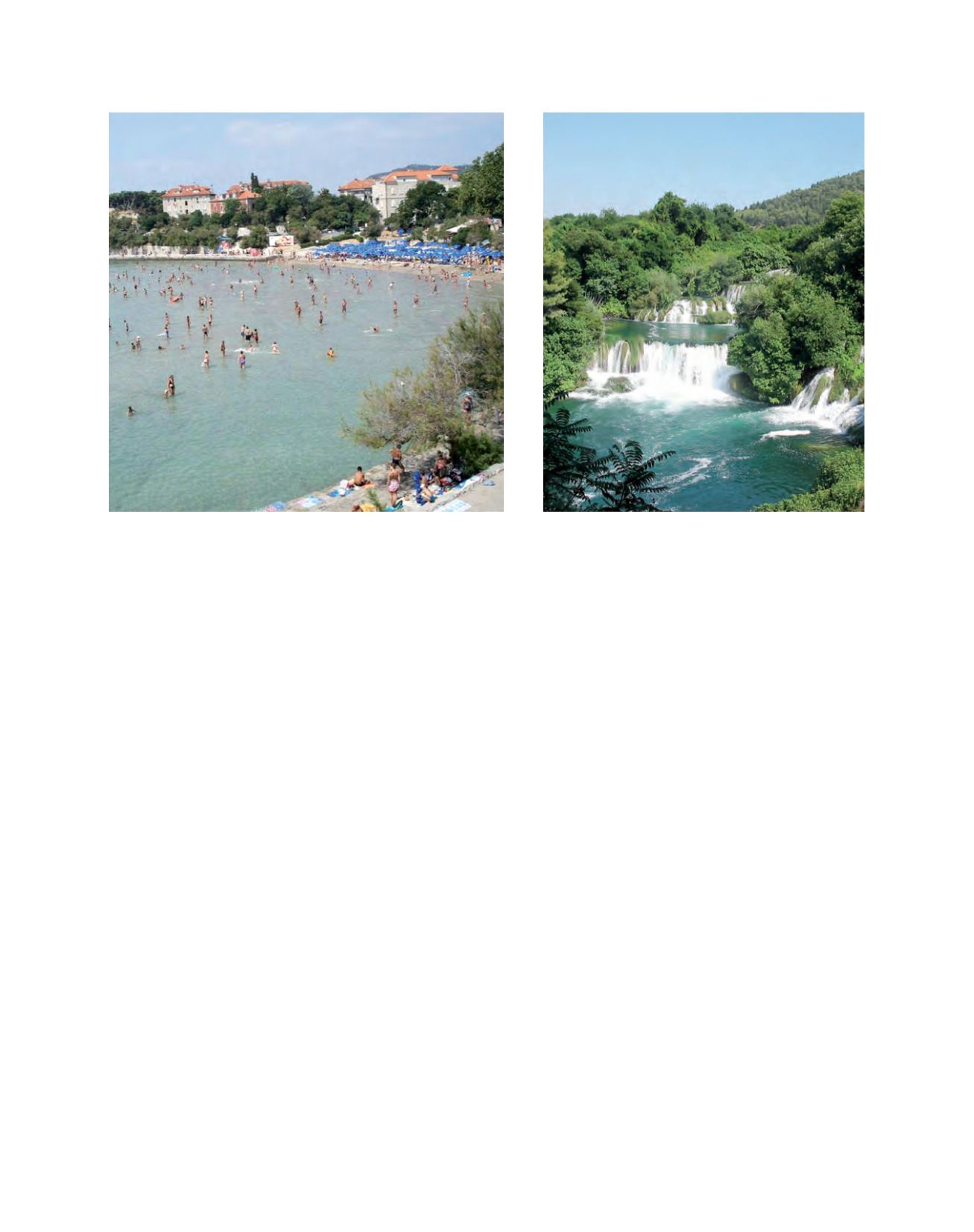

[
] 37
T
he
I
mpacts
and
I
mplications
of
C
limate
C
hange
and
V
ariability
The basic options available for coping with sea-level
rise, predicted to be between 9-88 centimetres by the
year 2100, are to protect vulnerable areas or to retreat
from them. Estimates of the expected rates of sea-level
rise are very uncertain. That, coupled with the fact that
it will probably occur very gradually means that there
is still time to develop the best methods for coping with
the problem, locality by locality. A mixture of near and
long-term strategies involving both protection and
retreat measures could be the best approach.
Events such as heat waves, which are likely to increase
in frequency, have had a health impact on Croatians.
The 2003 heat wave caused an estimated 185 additional
deaths in Croatia – a 4.3 per cent increase in mortality.
Therefore, it is very likely that climate change will have
an impact on human health in Croatia. These risks are
not fully understood, however, they are likely to include
cardiovascular risks from heat waves, increases in aller-
gic reactions resulting from changing pollen counts and
changes in the distribution periods of plants and pollens
and increased frequencies of heatstroke and other acute
impacts from hot daytime temperatures.
Water is a critical natural resource. It is used for
drinking, agriculture, wetlands services, and the
production of hydroelectric energy, among other
things. Croatia has abundant freshwater resources, and
therefore water resources are not considered a limit-
ing factor for development. However, while there is no
shortage of water per se, problems do exist. First, a
large amount of pumped water is wasted, which leads
to lost revenue of up to EUR286 million (0.9 per cent
of GDP) per year and increased GHG emissions result-
ing from the additional use of electricity for pumping.
In the future, Croatia is expected to be hotter and drier, especially
in summer. Increased temperatures are expected to have consider-
able impacts such as: increase of temperature in both sea and inland
bodies of water, soil temperature increase, groundwater tempera-
ture increase, which may lead to higher rates of evaporation and
a decrease in the groundwater table, a fall in lake and river levels,
decreases in soil moisture leading to droughts, more heat waves
affecting health, and numerous other impacts.
What would climate change affect in Croatia?
Tourism has long been important in Croatia. In 2007, tourists stayed
for a total of 56 million days and spent EUR6.7 billion. Tourism
generates about 20 per cent of GDP and 28.7 per cent of total
employment (336,000 jobs). By 2018, it is expected to account for
one third of total employment. In addition to those directly working
in the tourist industry, there are many people employed in related
industries that are directly impacted. Tens of thousands of families
rely on tourism income in the grey economy by supplementing their
incomes through tourism (unregistered apartment rentals, unreg-
istered sales of agricultural, aquaculture or fishery products). The
value of unregistered accommodation alone is equal to almost one
per cent of the entire country’s GDP. Most projections of tourism
in the EU show that by the end of the century, because of climate
change, hotter daytime temperatures along the Adriatic coast will
cause many beach tourists to avoid these destinations in summer
in favour of cooler locations further north. Conversely, the condi-
tions for tourism along the coastline are expected to improve in the
spring and, to a lesser extent, in the autumn. Overlooking these facts
could have serious adverse consequences on many local communi-
ties and, given the important role of beach tourism, to the national
economy. Hotter, drier summers with more extreme weather events
and a rising sea level may put human and economic development
gains at risk.
Beach in Split
The Krka river in Croatia
Image: www.blueflag.org
Image: www.images.google.hr
















